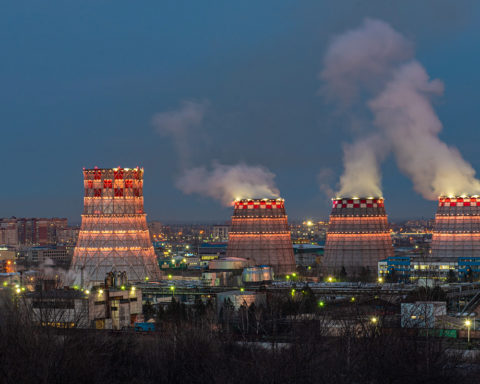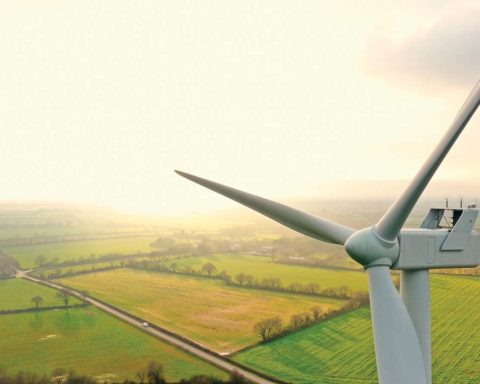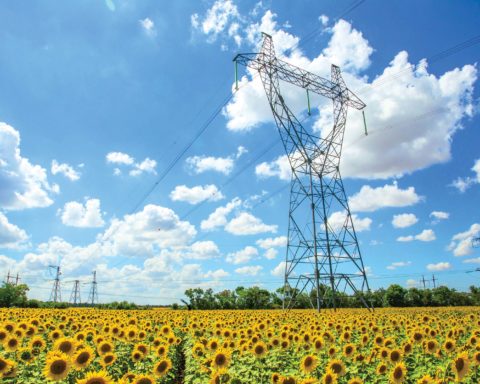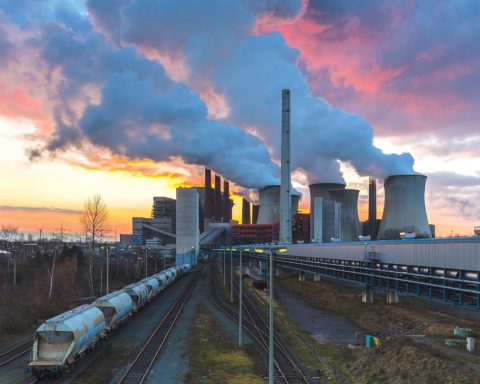Alexey MASTEPANOV
Head of the Analytical Center
of the Energy policy and Security (IOGP of the RAS),
a member of the Directorate Council of the IES,
DES., professor of the Gubkin University,
academician of the RANS
е-mail: amastepanov@mail.ru
Abstract. The article is devoted to the analysis of the state and development prospects of hydrogen energy in Russia. A brief history of the problem is given, the results achieved to date are shown. The main goals, directions and tasks of the action plan «Development of hydrogen energy in Russia until 2024», adopted in October 2020, are considered in detail. The analysis of the main projects and new technologies in the field of hydrogen energy, on which Russian specialists are working, are shown, their achieved and expected ones are shown. results. Particular attention is paid to the prospects for international cooperation of Russia in the field of production and use of hydrogen. It is concluded that Japan is considered one of the most promising countries for bilateral cooperation in Russian government circles.
Keywords: hydrogen and fuel cells, road maps, production and use of hydrogen, hydrogen energy, Russia, Japan.
Introduction
The possibilities of using hydrogen for energy purposes have been known for a long time, and interest in them has been manifested many times: in the 1970s – in connection with the oil crises, in the 1990s and 2000s – in connection with the growing concern about climate change. This stimulated relevant research and development (with an emphasis on transport), but there was no large-scale practical implementation of hydrogen technologies.
The situation began to change as more and more countries began to strive for sustainable development in the field of energy, towards a transition to a zero-carbon state, to support the energy transition as a concept for a zero-carbon energy future, realizing, at the same time, that this goal cannot be achieved only by using renewable sources energy alone.
Hydrogen has become an essential part of the carbon neutral policy of all countries that have announced such targets. Moreover, as the Executive Director of the International Energy Agency Fatih Birol said in an interview with the Financial Times, “I have never seen a single technology that would enjoy such universal support from all governments. Usually, governments have different views – on nuclear energy, gas, oil, coal, electric vehicles, but when it comes to hydrogen, everyone loves hydrogen, and many governments are adopting hydrogen strategies, one after another” [1].
Russia, which not only fully meets its needs for energy resources by their national production, but is also their largest exporter, did not stay away from this trend as well.

Source: seaforces.org
Based on the global trend towards decarbonization of the economy, formed by the Paris Climate Agreement, on October 12, 2020, the Russian government adopted an action plan “Development of Hydrogen Energy Industry in the Russian Federation until 2024”.
A bit of history and results achieved
Russia has extensive experience in the development and implementation of hydrogen energy technologies. In the 30s of the last century in the Soviet Union at the Bauman Moscow State Technical University, a study was conducted on the effect of hydrogen additions to gasoline for automobile engines. However, the practical use of hydrogen as a motor fuel using this technology was a coerced choice during the Great Patriotic War – in 1941 in besieged Leningrad.
A broad front of research and development in the field of hydrogen and hydrogen technologies were conducted in 1970s under the Hydrogen Energy state program. Within the framework of this program, the concept of hydrogen power engineering with the nuclear production of this gas was developed. According to the outstanding nuclear physicist, Academician N. Ponomarev-Stepnoy, Soviet scientists even at that time understood that hydrogen energy is a new technological mode in which hydrogen plays the role of an energy storage, energy carrier and chemical reagent in industry, and the use of nuclear technology makes it possible to ensure its environmentally friendly production. The entire energy consumption when obtaining this gas, which is produced from just water and hydrocarbons, was well understood [2]. In the last quarter of the ХХ century, thanks to large state investments, a unique scientific and technical reserve was created in the country (the Energia-Buran rocket and space complex, submarine power plants, the TU-155 aircraft, etc.) and a serious potential was formed in this area [3].
During the period of reforming the country’s economy, this reserve was largely lost, and the potential was weakened.
A new stage in the development of hydrogen energy industry began in Russia only in the 2000s, when the importance of this topic was recognized by the state [4].
In 2003, the non-profit National Association for Hydrogen Energy (NAHE) was established. The Association’s mission was to stimulate the development and application of hydrogen technologies and the use of hydrogen as an energy carrier, as well as the development of the fuel cell industry. The first results were obtained in 2006, when the first rally of hydrogen cars took place, then in November 2019, when a hydrogen tram was tested in St. Petersburg, and in May 2020, when the first hydrogen filling station appeared in the Moscow region. Developments are underway to use hydrogen at nuclear power plants as an energy storage unit. However, today hydrogen in Russia is an industrial gas that is created and used, as a rule, directly at the places of its consumption, mainly in the production of ammonia, methanol, in oil refining, etc. The total production of hydrogen in Russia is about 5 million tons year.
Recently, the government of the country has also begun to pay attention to the hydrogen topic. The need to develop hydrogen technologies, including production technologies, hydrogen systems, energy storage and covering irregularities in the load schedule on generation facilities, hydrogen storage and transportation technologies is mentioned in a number of strategic documents. One of the last ones is the Energy Strategy of Russia for the period until 2035 (ES-2035), adopted in June 2020 [5]. In response to the new government policy in the field of hydrogen, the largest companies in Russia, including Gazprom, Rosatom, Rostec and others, and the Russian Academy of Sciences have intensified development and marketing research in the field of hydrogen production and export.
Hydrogen topic in ES-2035
The task of hydrogen energy, according to ES-2035, is the development of production and consumption of hydrogen, the entry of the Russian Federation into the number of world leaders in its production and export. The complex of key measures contributing to the solution of this problem includes:
- state support for the creation of an infrastructure for the transportation and consumption of hydrogen and energy mixtures based on it, as well as providing legislative support for the production of hydrogen;
- increase in the scale of hydrogen production from natural gas, including the use of renewable energy sources and nuclear energy;
- development of domestic low-carbon technologies for the production of hydrogen by methods of conversion, methane pyrolysis, electrolysis and other technologies, including the possibility of localizing foreign technologies;

Source: deb-37 / Depositphotos.com
- stimulation of demand in the domestic market for hydrogen-based fuel cells from the transport side, as well as for the use of hydrogen and energy mixtures based on it as energy storage units and converters to improve the efficiency of centralized energy supply systems;
- creation of a regulatory framework in the field of hydrogen energy safety;
- intensification of international cooperation in the field of hydrogen energy development and access to foreign markets.
The main indicator for solving the problem of hydrogen energy in ES-2035 is the export of hydrogen, the volume of which should reach 2 million tons by 2035.
The main goals and objectives of the roadmap “Development of Hydrogen Energy Industry in Russia until 2024″
In order to fulfil the country’s potential and achieve the goals embodied in the Energy Strategy, departments have prepared a special action plan (roadmap) on the development of hydrogen energy industry in Russia until 2024 [6], which was approved by the Russian Government on October 12, 2020 [7].
The main goal of this plan was the organization of priority work on the formation in Russia of a high-performance export-oriented hydrogen energy industry, developing on the basis of modern technologies and provided with highly qualified personnel. We intend to achieve this goal by improving the regulatory framework, forming and implementing measures of state support for projects for the production, storage, transportation and use of hydrogen, strengthening the positions of domestic companies in the sales markets for finished products, as well as carrying out research and development work in critical areas of development of science, technic and technology.
The action plan consists of eight target sections:
- strategic planning and monitoring of hydrogen energy industry development;
- measures for stimulation and state support for hydrogen energy industry development;
- formation of production potential;
- implementation of priority pilot projects in the field of hydrogen energy industry;
- scientific and technical development and implementing high-tech solutions;
- improvement of the regulatory legal framework and the system of national standardization;
- development of human resources;
- development of international cooperation.

Source: ykanazawa1999 / Flickr.com

Source: Slavneft-YANOS
The priority task for 2020–2021 as part of the implementation of the action plan is to create a concept for the development of hydrogen energy industry in Russia, which should be completed in the Q1 2021.
An interdepartmental working group for the development of hydrogen energy industry chaired by the Secretary of Energy of Russia and a project office based on the Russian Energy Agency, which will have to provide information and analytical support for the implementation of the plan, will be created as a management system for the implementation of strategic tasks. It is planned to pay special attention to the training of highly qualified personnel for the new industry, including the organization of internship programs for graduate students and scientists in the world centers of competence conducting research in the field of hydrogen energy.
Major projects and new technologies
According to the Ministry of Energy, today Russia already has important competitive advantages in the development of hydrogen energy industry: the presence of a significant energy potential and resource base, underutilized generating capacities, geographic proximity to potential consumers of hydrogen, scientific groundwork in the production, transportation and storage of hydrogen, as well as the presence of an operating transport infrastructure. This may help Russia in the future to take the leading place in the production and supply of hydrogen to the global market [6].
In particular, large reserves of gas, coal and water, a significant reserve of generating capacities and a huge potential in the field of green energy make it possible to develop hydrogen production in Russia by a variety of methods. These include steam conversion of methane, including in combination with carbon capture and storage (CCS) technologies; and electrolysis, including using energy from RES and NPP. The potential of hydrogen production in Russia, only due to the loading of unused reserve generating capacities, is estimated by the Ministry of Energy at 3.5 million tons, by the Strategic Development Center Foundation – at 5–6 million tons, and by the EnergyNet Infrastructure Center – at 1.9–3.5 million tons [8].
Gazprom has repeatedly stated that it views hydrogen as a way to diversify its business and improve gas utilization efficiency. In particular, the company highlighted the prospects of methane pyrolysis – this technology does not emit CO2 and does not require the construction of storage facilities for it, and the resulting by-product pure carbon may even find its own commercial application. At present, Gazprom’s gas transmission subsidiaries in Samara and Ufa are implementing two innovative projects to produce methane-hydrogen fuel as a fuel gas for gas pumping units based on adiabatic methane conversion.

Source: ekb.ru
The effect of the introduction is expressed in fuel gas savings – up to 5 %, reduction of СО2 emissions – by 30 % and pollutants: NOx – by 4.5 times, СО – by 5 times. The next step is the organization of modular integrated equipment for the production of methane-hydrogen fuel (its unification) for serial production and replication of the technology at the facilities of Gazprom. Scientific institutes of the gas concern are working on the creation of zero-carbon technologies for the production of hydrogen from natural gas.
Together with German and Austrian companies, a scientific and technical project is being implemented to test the possibility of safe storage of methane-hydrogen mixtures in UGS facilities [8].
Rosatom also plans to produce hydrogen from hydrocarbons (using
pyrolysis/steam conversion of methane technology) at special nuclear power
engineering plant (NPEP) using heat from high-temperature gas-cooled reactors
(HTGCR). Such stations allow the use of nuclear power in the development of
clean energy without harmful emissions into the atmosphere. Russian development
of HTGCR with a helium coolant began as early as in the 1960s. Today Russia
already has key HTGCR technologies and competencies for the production of 100 thousand
tons of hydrogen from one 200 MW module. In pilot production, technologies of
adiabatic conversion of methane and membrane hydrogen evolution have been
developed [6, 8]. In August 2018, Rosenergoatom Concern (operator of all
Russian nuclear power plants, part of Rosatom’s electric power division) and
OKBM Afrikantov (part of Rosatom State Corporation’s machine-building division)
began to substantiate the development of project proposals for the industrial
production of hydrogen at NPEP.
According to the materials of the state corporation, the investment in the creation of the parent NPEP for large-scale hydrogen production could reach about 275 billion rubles, and its construction is expected by 2030 [9]. According to Academician N. N. Ponomarev-Stepnoy, we must outline a task for ourselves: 2050 – production of 50 million tons of hydrogen per year. For this, it is necessary to build nuclear power engineering stations. We already have the raw materials and knowledge [2].
The All-Russian Scientific Research Institute for the Operation of Nuclear Power Plants (VNIIAES, part of the Rosatom electric power division) is developing technical proposals and conducting a technical and economic assessment of the creation and use of autonomous modules for the production and accumulation of hydrogen as part of individual NPP modules for its use in energy supply, industry and on transport [9].
A pilot project to create an infrastructure for testing hydrogen energy technologies and electrolysis hydrogen production is being prepared at the Kolskaya NPP.
In part, this will help the company to solve the problems of the historically formed energy surplus in the Murmansk region [10]. In the next two to three years, Rosatom is going to use about 1.5 MW of nuclear power for electrolysis production, in five to seven years – about 4 MW, and by 2030 – 500 MW. According to the state corporation’s estimate, 1 MW of electric power can produce about 200 cubic meters of hydrogen per hour (about 158 tons per year). This volume of hydrogen will be enough to implement, for example, pilot regional programs to supply urban transport in large metropolitan areas, according to Rosatom [10].

Source: Rosenergoatom
As part of the implementation of a comprehensive program for the development of atomic and hydrogen energy, the company plans the following innovative developments [11]:
- metal hydride thermosorption compressor with an output hydrogen pressure of 80 MPa and a capacity of 108 nm3H2/hour;
- electrolyzer-hydrogen generator with a capacity of 108 nm3H2/hour;
- units for producing alloys (sorbents) with a capacity of 500 kg/day;
- block for producing methylcyclohexane by hydrogenation of toluene and a logistics center for the transportation and delivery of VKEK products (hydrogen/oxygen) to consumers and a hydrogen hub.

Source: tinx / Depositphotos.com
In September 2019, an agreement was signed between Rosatom, Russian Railways and Transmashholding on cooperation on a project for organizing railway traffic using trains powered by hydrogen fuel cells1.
1 Commenting on this agreement, the technical director of Transmashholding, Mikhail Rozhkov, on the last online forum, which was held on October 22–23, 2020 “PRO//movement.1520” noted that one of the key technologies for the large-scale use of hydrogen in railway transport is to reduce the weight of cryogenic tanks. So that the efficiency that we get in comparison with diesel fuel does not lose due to rather heavy storage systems, from which we cannot get away today,” he explained [12].
Within the framework of the project, Rosatom will act as a supplier of hydrogen, fuel cells and other key equipment. In the same month, Rusatom Overseas and the Agency for Natural Resources and Energy of the Ministry of Economy, Trade and Industry of Japan signed an agreement on cooperation in the field of joint development of a feasibility study for a pilot project for exporting hydrogen from Russia to Japan in 2020–2021 [8].
The interest in hydrogen was announced on September 8, 2020 at the Gastech conference by the Deputy Chairman of the Management Board of NOVATEK – Mark Jetvey. “We are exploring the prospects for the production of hydrogen from methane from a technical and economic point of view,” he explained, adding that we are talking about both hydrogen for the needs of the company itself and supplies to consumers [10].
Scientists from the MIFI National Research Nuclear University (MIFI NRNU) have created a pilot plant for the development of advanced solid-state storage devices for hydrogen fuel [13], and scientists from the Tomsk Polytechnic University (TPU) have developed a unique technology for producing a promising material – high-purity cubic tungsten carbide. It could replace expensive platinum catalysts and reduce the cost of producing hydrogen fuel [14].
Rosneft also announced the achievements of its specialists. The unified research and development center of this company (RN URDC) has developed an innovative technology for methane aromatization, which allows the simultaneous production of hydrogen and aromatic petrochemical products from natural and associated petroleum gas. This technology allows obtaining 1 billion cubic meters of hydrogen and 0.5 million tons of aromatic hydrocarbons while processing 1 billion cubic meters of natural or associated petroleum gas. The advantages of the technology are a decrease in carbon dioxide emissions, a decrease in specific capital costs, an increase in product output and economic efficiency [15].
The action plan sets new tasks for Russian scientists and specialists. According to it, a number of pilot projects in the field of hydrogen energy are planned to be implemented by 2024:
- creation, production and application of hydrogen production unit without carbon dioxide emissions;

Source: Rosatom
- development, manufacture and testing of gas turbines running on methane-hydrogen fuel;
- creation of a prototype of hydrogen-powered railway transport;
- creation of pilot sites for low-carbon hydrogen production at hydrocarbon processing facilities or natural gas production facilities, etc.
The introduction of pilot systems for the production of hydrogen should be accompanied by the stimulation of domestic demand for it. For this purpose, the action plan proposes testing the use of hydrogen and methane-hydrogen fuels in gas power plants (gas turbine engines, gas boilers), as well as testing the possibilities of using hydrogen as a motor fuel in various types of transport [7].
In response to the tasks set, in November 2020, Russian educational and scientific organizations engaged in developments in the field of hydrogen energy united in a consortium to develop the entire chain of “hydrogen” technologies in Russia – from the production of this gas to its use. The initiator of consortium creation was Tomsk Polytechnic University (TPU). The new association was named “Technological Hydrogen Valley”. In addition to TPU, the consortium included the Institute of Catalysis of the Siberian Branch of the RAS, the Institute of Problems of Chemical Physics of the RAS, the Institute of Petrochemical Synthesis of the RAS, the Samara State Technical University and the Sakhalin State University. Other universities and academic institutions are expected to join the consortium in the future. The consortium plans close cooperation with the largest Russian companies interested in the development of hydrogen energy industry. In the near future, the participants will develop a roadmap for further work.

Russia – IEA
USA
Middle East
Europe
China
Natural gas costs
CAPEX
OPEX
Total
Fig. 1. The cost of producing hydrogen from natural gas, taking into account the costs of carbon dioxide capture, utilizing and storage (CCUS), USD/kg
Source: [19]
The first joint scientific event will be the conference, which is scheduled in December this year [16].
The Sakhalin Region was chosen as a pilot testing ground for the implementation of the agreement between Rosatom, Russian Railways and Transmashholding on the creation of a train powered by hydrogen fuel cell [17]. Currently, the government of the Sakhalin Oblast is exploring the possibility of creating an entire hydrogen cluster on the island with the possibility of exporting this type of fuel to the markets of Asian countries. The “heart” of this cluster should be a scientific and technological competence center for hydrogen energy, which will be created on the basis of the Sakhalin State University. The project is planned to be implemented with the participation of the Russian Academy of Sciences. According to experts, Sakhalin has natural gas, reserve capacities of the energy system, and a large wind potential [18].
Naturally, it is too early to talk about the cost of producing hydrogen on a large scale. But there are similar estimates. Thus, in July 2019, experts of the Gazprombank Center for Economic Forecasting made estimates of the cost of producing hydrogen from natural gas [19].

Source: albert bakker / flickr.com
Prospects for international cooperation
Since the prospects for the development of hydrogen energy industry in Russia are largely associated with the export of hydrogen, international cooperation in this area takes a special place in the upcoming activities of the country’s government. The action plan provides for three main areas of such cooperation:
- bilateral cooperation with countries producing and consuming hydrogen;
- development of international cooperation on hydrogen energy issues;
- Russia’s participation in the activities of relevant international structures.
Harmonization of national, interstate and international standards in the field of hydrogen energy will also become an important component of international cooperation [20]. Russian government authorities consider Japan to be one of the most promising countries for bilateral cooperation [21, 22].
An example of such bilateral cooperation is the development of a feasibility study for a pilot program for the delivery of hydrogen from Russia to Japan, which is being carried out by Rosatom, METI and Kawasaki Heavy Industries (the work should be completed by the end of 2021) [22].
References
1. Will ‘Black April’ prove a turning point for energy? FT energy editor David Sheppard quizzes Fatih Birol of the International Energy Agency on the transition to ‘net zero’ – URL: https://www. ft.com/content/4dc56a73-e5b7-48fb-b281-0538239aa2a7?utm_campaign=IEA%20newsletters&utm_ source=SendGrid&utm_medium=Email
2. Пономарев-Степной Н. Водород – новый ключевой продукт «Росатома». – URL: https://atomicexpert.com/hydrogen_project_rosatom
3. Пресс-релиз Национальной ассоциации водородной энергетики. – URL: https://h2-o.forum2x2.ru/t23-topic
4. Послание Президента Российской Федерации от 10.05.2006 г. – URL: http://www.kremlin.ru/acts/bank/23819
5. Энергетическая стратегия Российской Федерации на период до 2035 года. – URL: https://minenergo.gov.ru/node/1026
6. Правительство Российской Федерации утвердило план мероприятий по развитию водородной энергетики. – URL: https://minenergo.gov.ru/node/19194
7. План мероприятий «Развитие водородной энергетики в Российской Федерации до 2024 года» – URL: http://static. government.ru/media/files/7b9bstNfV640nCkkAzCRJ9N8k 7uhW8mY.pdf
8. Водородная энергетика. Энергетический бюллетень. Аналитический центр при Правительстве РФ. Issue No. 89, October 2020.
9. Водородная экономика: новые надежды на успех. Энергетический бюллетень. Аналитический центр при Правительстве РФ. Issue No. 73, June 2019.
10. Водород у ворот. Как Россия пытается выйти на новый рынок // Газета «Коммерсантъ». Issue No. 184 dated 08.10.2020.
– URL: https://www.kommersant.ru/doc/4521376?utm_source=vybor&utm_medium=email&utm_campaign=newsletter
11. ВНИИАЭС готовит проекты по водородной энергетике. – URL: https://gisprofi.com/gd/documents/vniiaes–gotovit–proekty–po–vodorodnoj–energetike.html
12. ТМХ видит перспективы перехода в магистральном грузовом железнодорожном движении на газ, далее – на водород. – URL: https://company.rzd.ru/ru/9401/page/78314?id=191925
13. В НИЯУ МИФИ создали установку для разработки передовых накопителей водородного топлива. Портал «НАУЧНАЯ РОССИЯ». – URL: https://scientificrussia.ru/news/v–niyau–mifi–sozdali–ustanovku–dlya–razrabotki–peredovyh–nakopitelej–vodorodnogo–topliva
14. Водородное топливо станет дешевле благодаря российским ученым. – URL: https://ria.ru/20201013/tpu-1579430871. html?in=t
15. «Роснефть» развивает технологии ароматизации метана. – URL: https://www.rosneft.ru/press/news/item/203423/
16. В России создан научный консорциум по развитию водородных технологий. – URL: https://ria.ru/20201113/tpu-1584487143.html
17. Центр по отработке технологий водородной энергетики…– URL: https://1prime.ru/energy/20200430/831364968.html
18. СахГУ вошел в «Технологическую водородную долину». – URL: https://sakhalin.info/news/198334
19. «Водородная экономика» – перспективы перехода к альтернативным энергоносителям и возможности экспорта для России. Центр экономического прогнозирования Газпромбанка. – URL: https://investvitrina.ru/ articles/makroekonomicheskii–obzor–vodorodnaya–ekonomika–perspektivy–perehoda–k–alternativnym–energonositelyam–i–vozmozhnosti–eksporta–dlya–rossii/
20. Мастепанов А, Араи Х. Водородная стратегия Японии // Энергетическая политика. Issue No. 11 (153), November 2020.
21. Состоялись переговоры Александра Новака с министром экономики, торговли и промышленности Японии Хироси Кадзиямой. – URL: https://minenergo.gov.ru/node/18820
22. Russia plans to export hydrogen to Asia in green shift. – URL: https://asia.nikkei.com/Editor-s-Picks/Interview/Russia-plans-to-export-hydrogen-to-Asia-in-green-shift







